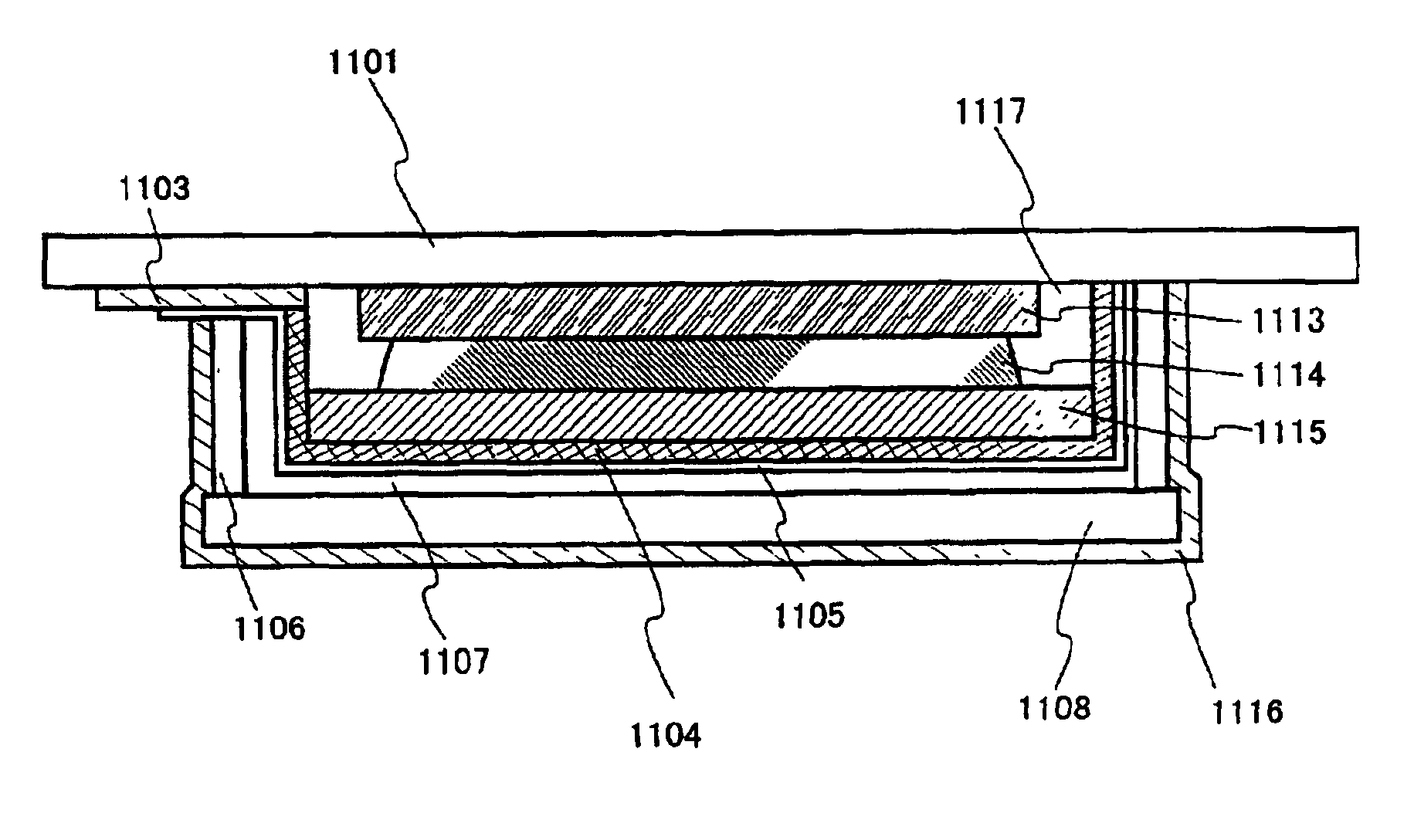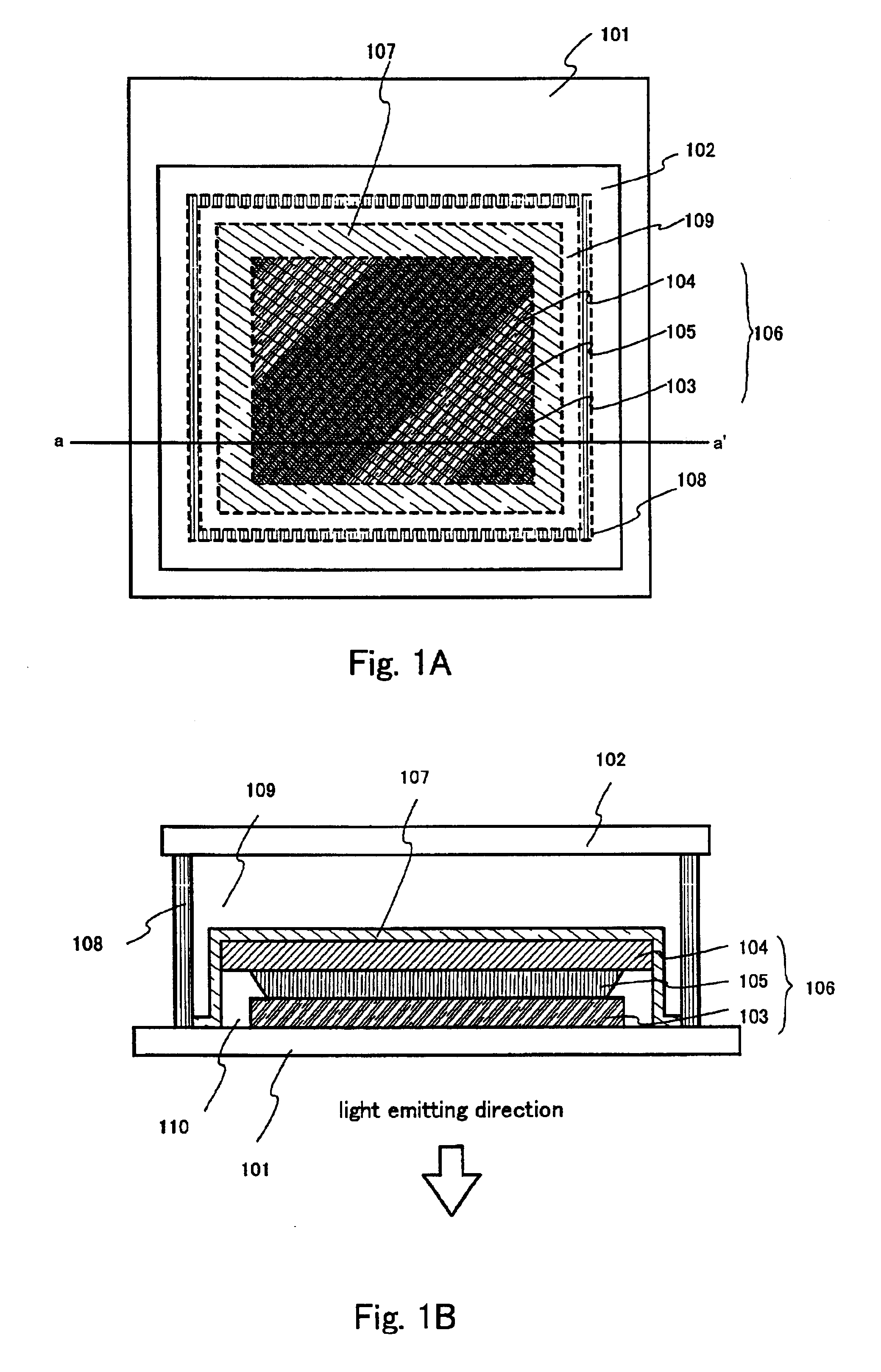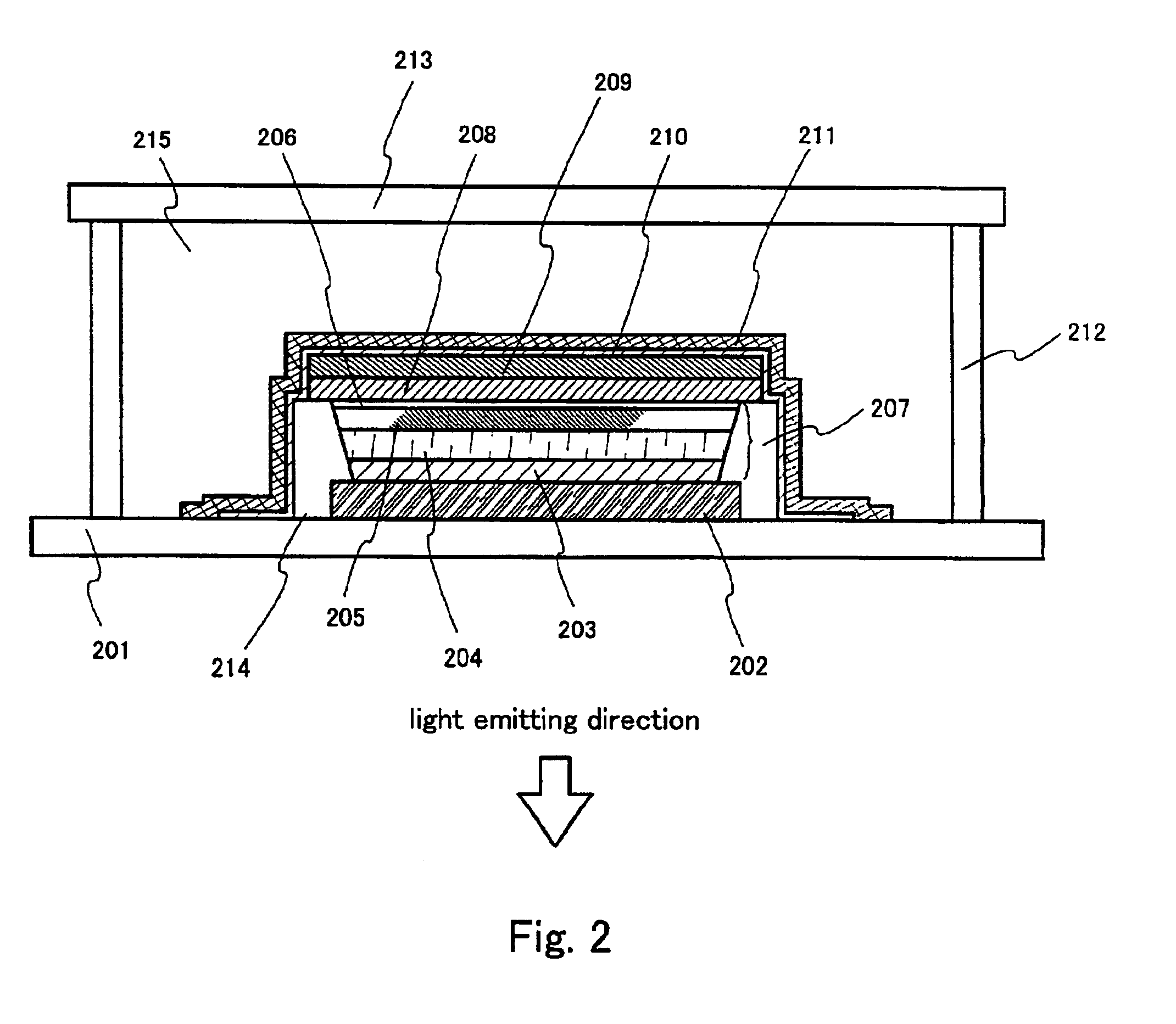Light emitting device
a technology of light-emitting devices and sealing techniques, which is applied in the direction of discharge tubes/lamp details, discharge tubes luminescnet screens, other domestic articles, etc., can solve the problems of insufficient life of elements, deterioration of elements, and development of dark spots, so as to prevent el element deterioration, simple and effective
- Summary
- Abstract
- Description
- Claims
- Application Information
AI Technical Summary
Benefits of technology
Problems solved by technology
Method used
Image
Examples
embodiment 1
[Embodiment 1]
[0066]A schematic diagram of an element structure of an EL element used in implementing the present invention is shown in FIG. 2. Reference numeral 201 denotes a substrate in FIG. 2, and light transmitting materials such as glass and quartz can be used for the substrate 201. Further, reference numeral 202 denotes an anode. The anode 202 is formed by ITO, an alloy of tin oxide and indium oxide, but chemical compounds in which from 2 to 20% of zinc oxide (ZnO) is mixed into indium oxide, and chemical compounds made from zinc oxide and calcium oxide may also be used. Furthermore, edge portions of the anode 202 are covered by an insulating film 214 made from an insulating material.
[0067]An EL layer 207 is formed next having a lamination structure made from a hole injecting layer 203, a hole transporting layer 204, a light emitting layer 205, and a buffer layer 206. Specifically, copper phthalocyanine (Cu-Pc) and PEDOT, which is a polythiophene derivative, can be used in fo...
embodiment 2
[Embodiment 2]
[0090]Next, the case of using the present invention to the light-emitting device of an active matrix type is explained in this embodiment. Here, a method of simultaneously manufacturing TFTs (n-channel TFT and p-channel TFT) in a pixel portion and a driver circuit provided in the periphery of the pixel portion on the same substrate and also manufacturing an EL element is described in detail with reference to FIG. 4A to FIG. 7.
[0091]First, in this embodiment, a substrate 300 is used, which is made of glass such as barium borosilicate glass or alumino borosilicate glass, typified by #7059 glass or #1737 glass of Corning Inc. There is no limitation on the substrate 300 as long as a substrate having a light transmitting property is used, and a quartz substrate may also be used. In addition, a plastic substrate having heat resistance to a treatment temperature of this embodiment may also be used.
[0092]Then, a base film 301 formed of an insulating film such as a silicon oxid...
embodiment 3
[Embodiment 3]
[0160]A case of using the present invention in a passive matrix (simple matrix) light emitting device is explained in this embodiment. FIG. 9 is used in the explanation. Reference numeral 1001 denotes a substrate made from glass in FIG. 9, and reference numeral 1002 denotes an anode made from a transparent conductive film. A chemical compound of indium oxide and zinc oxide is formed by sputtering as an anode 1002 in embodiment 3. Note that, although not shown in FIG. 9, a plurality of the anodes 1002 are arranged in a direction parallel to the page. In addition, banks 1003 are formed so as to be buried between the anodes 1002.
[0161]Cathodes 1006 arranged in a stripe shape are formed in a vertical direction to the page.
[0162]EL layers 1004a to 1004c composed of EL materials are formed next by evaporation, as shown by embodiment 1. Note that the EL layer 1004a is a red color light emitting EL layer, the EL layer 1004b is a green color light emitting layer, and the EL lay...
PUM
 Login to View More
Login to View More Abstract
Description
Claims
Application Information
 Login to View More
Login to View More - R&D
- Intellectual Property
- Life Sciences
- Materials
- Tech Scout
- Unparalleled Data Quality
- Higher Quality Content
- 60% Fewer Hallucinations
Browse by: Latest US Patents, China's latest patents, Technical Efficacy Thesaurus, Application Domain, Technology Topic, Popular Technical Reports.
© 2025 PatSnap. All rights reserved.Legal|Privacy policy|Modern Slavery Act Transparency Statement|Sitemap|About US| Contact US: help@patsnap.com



